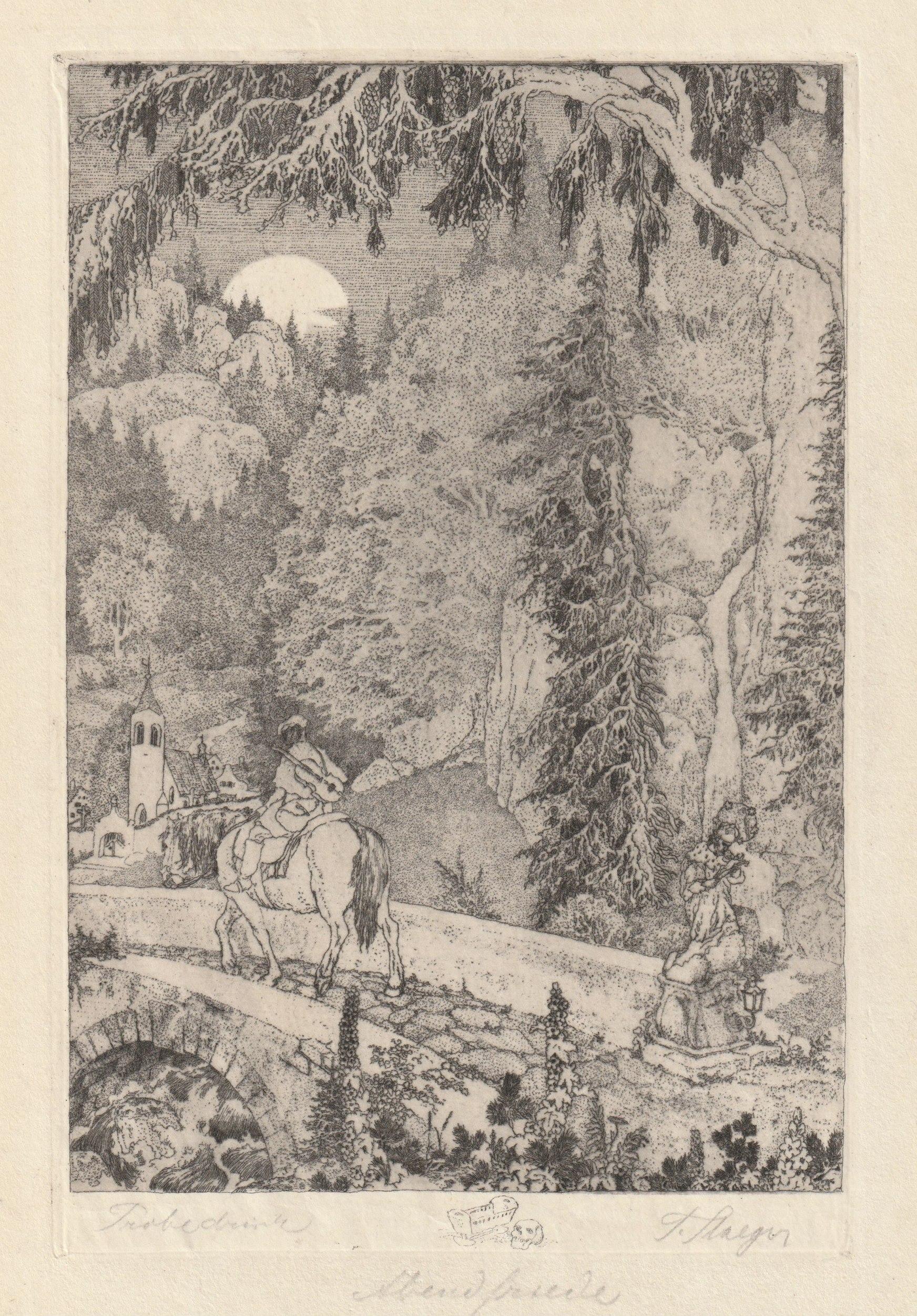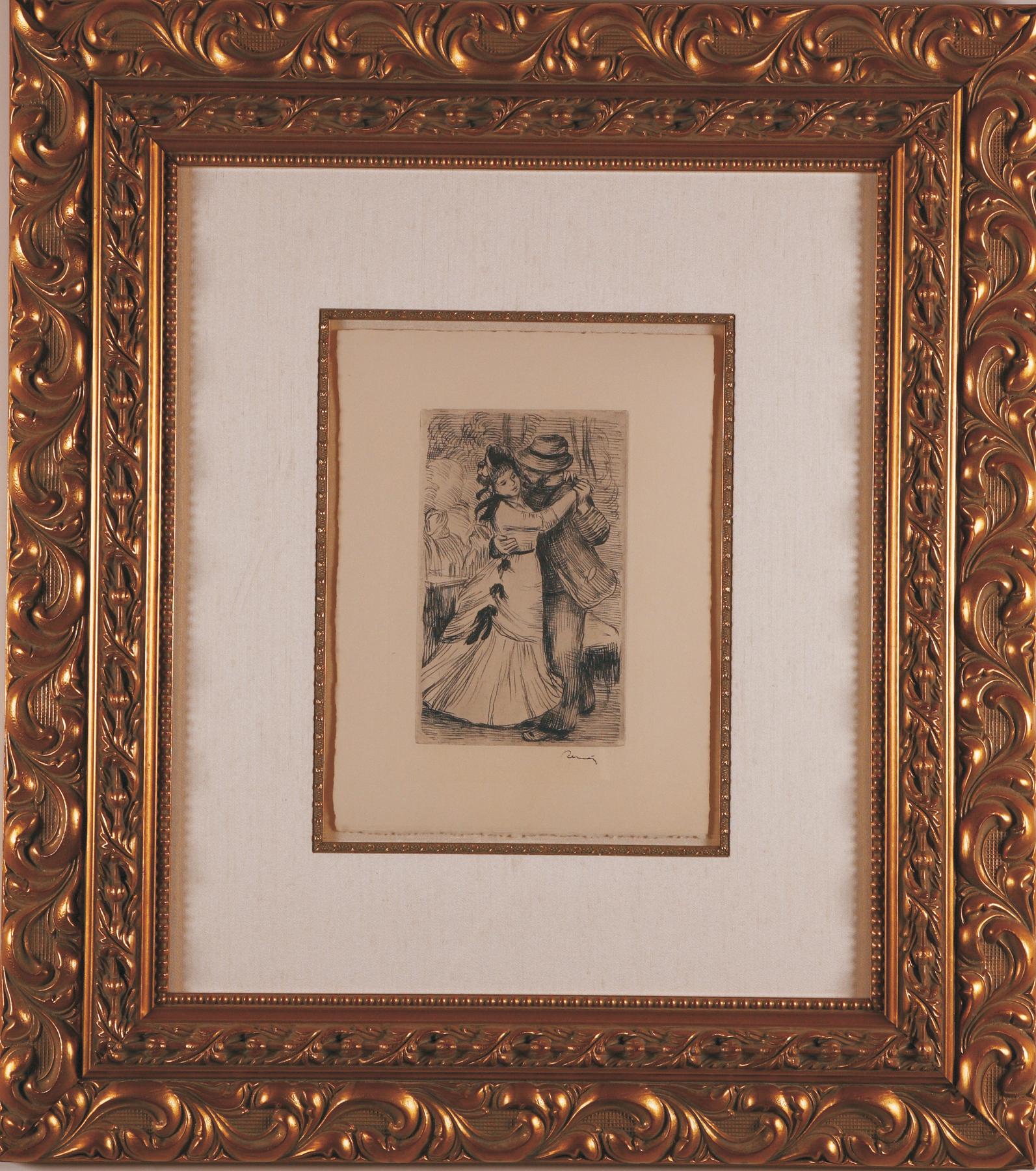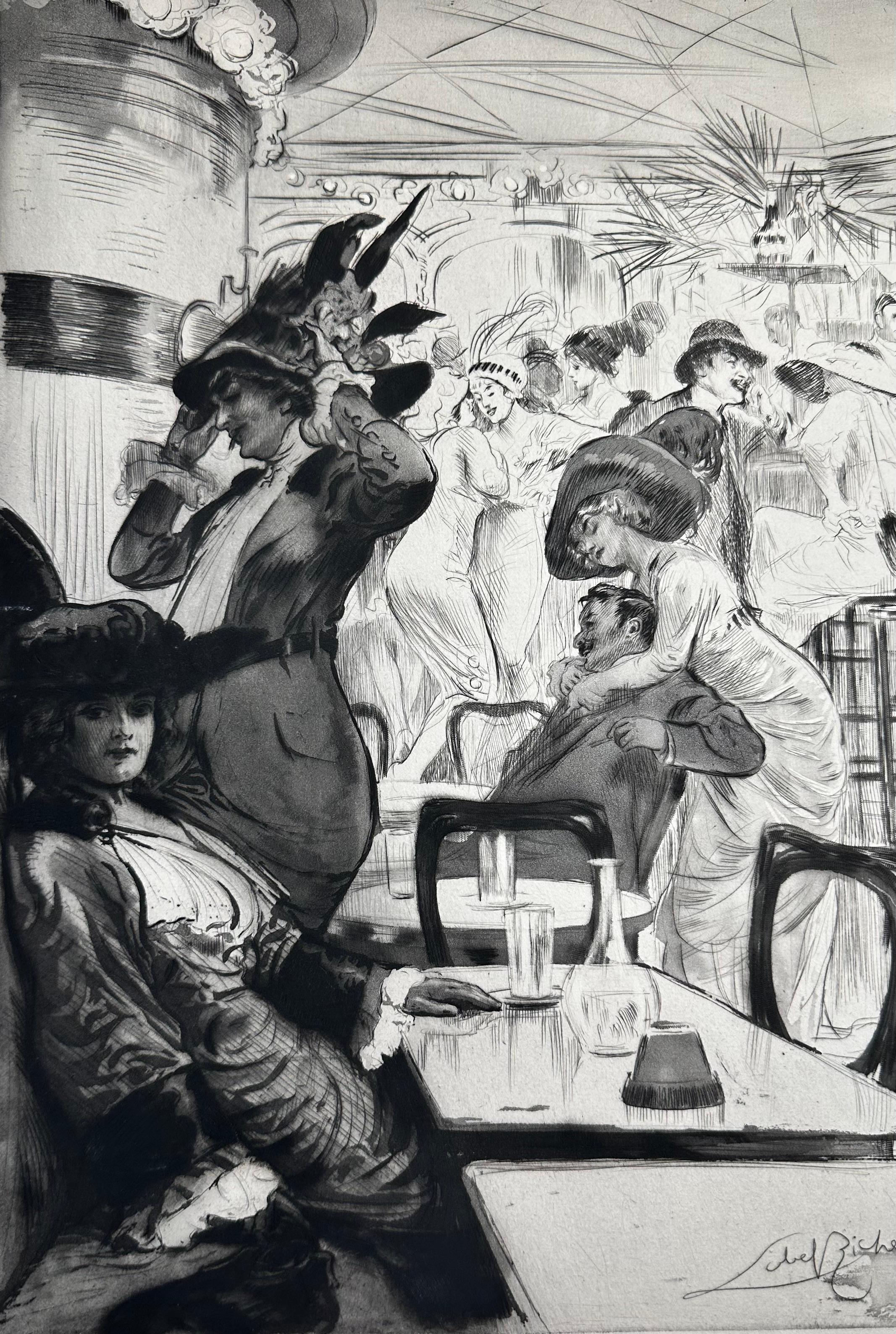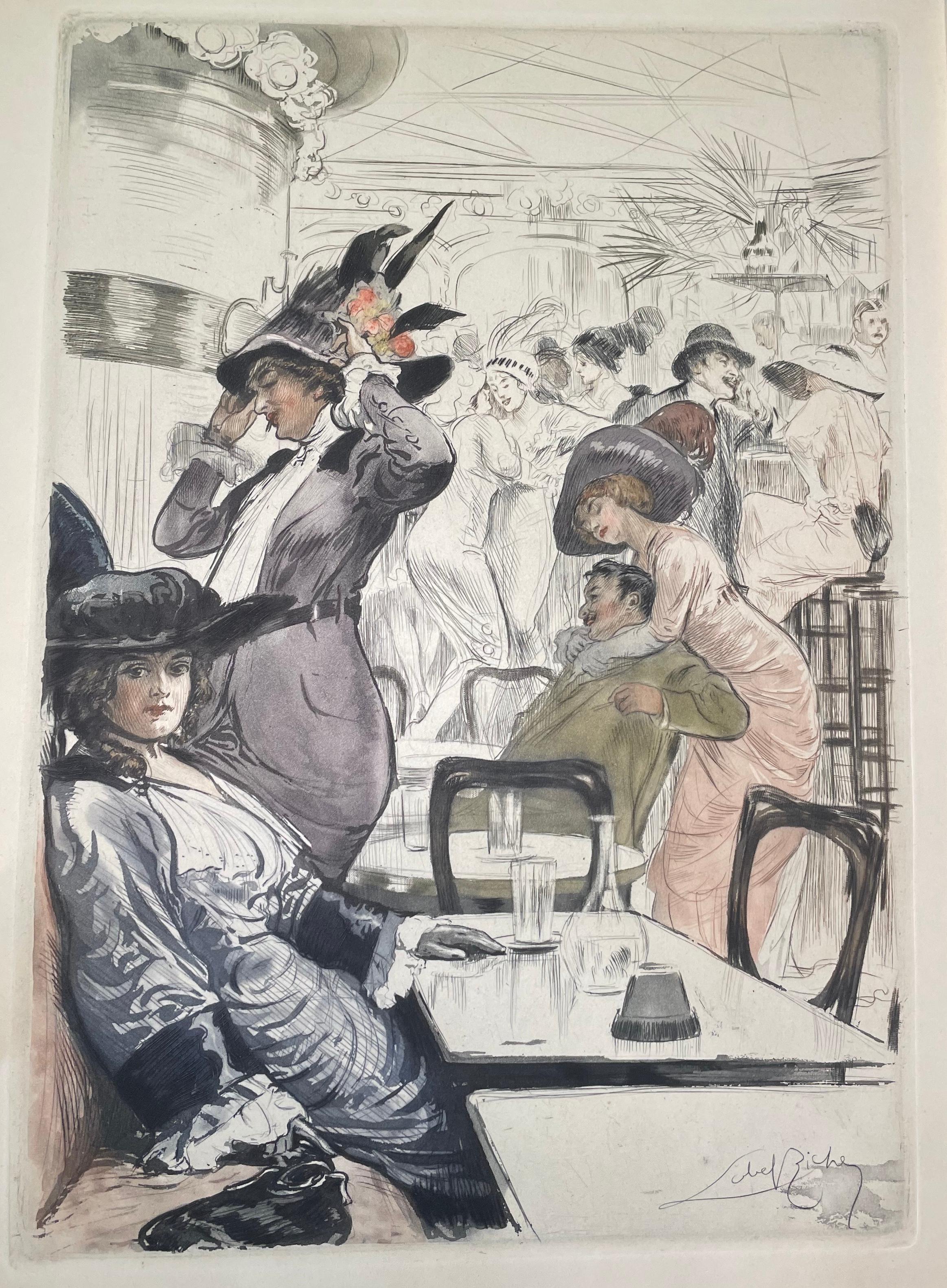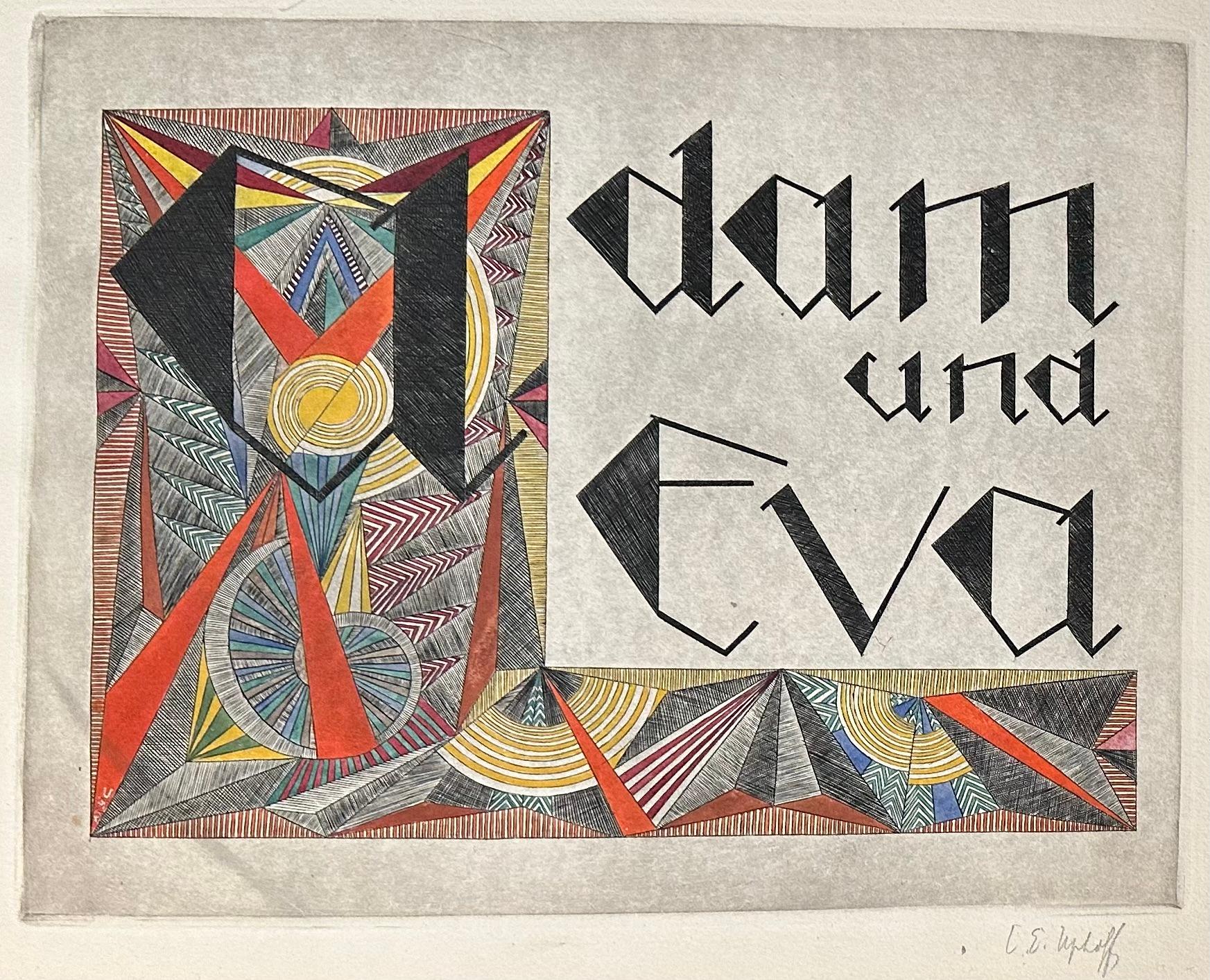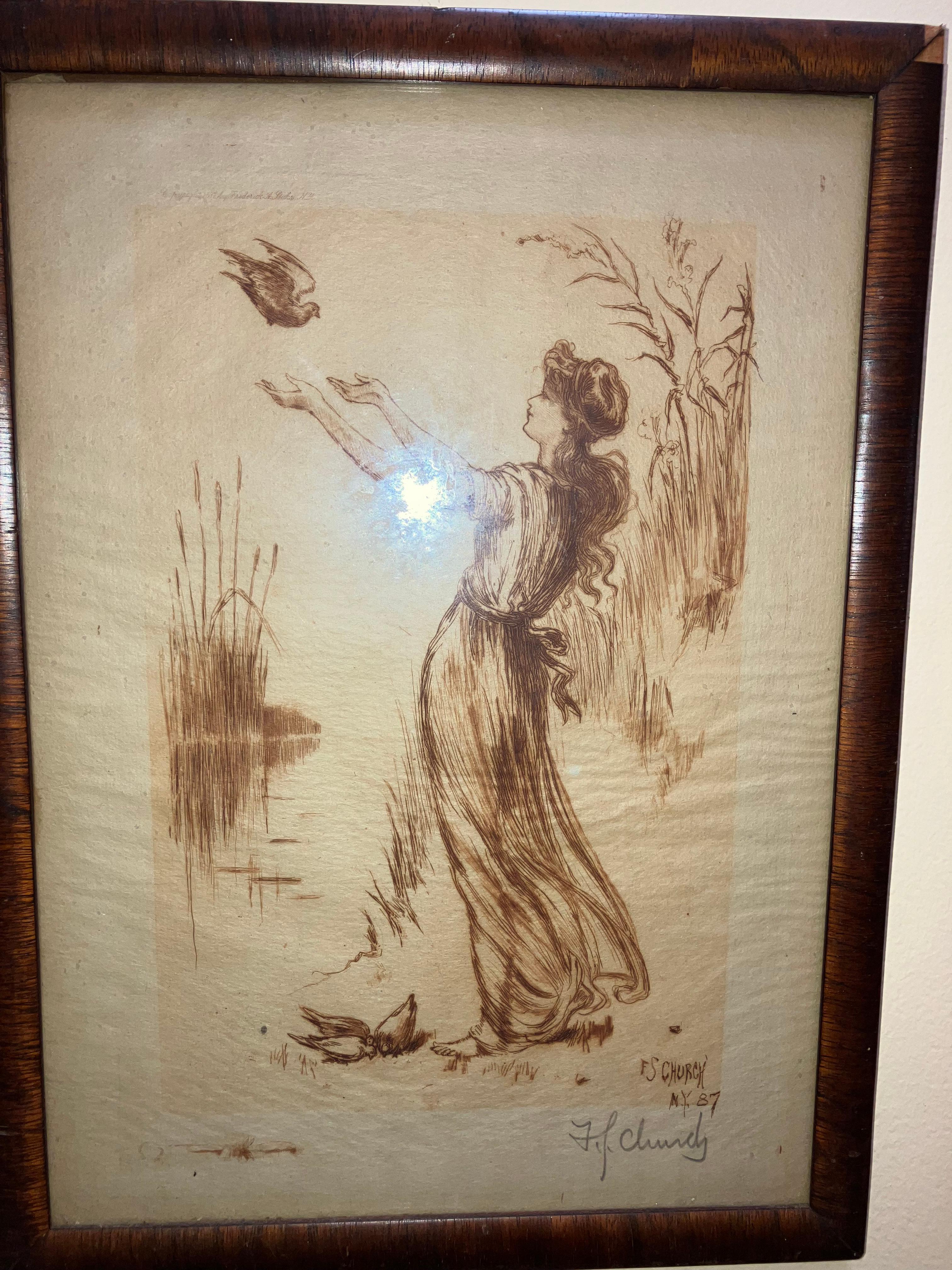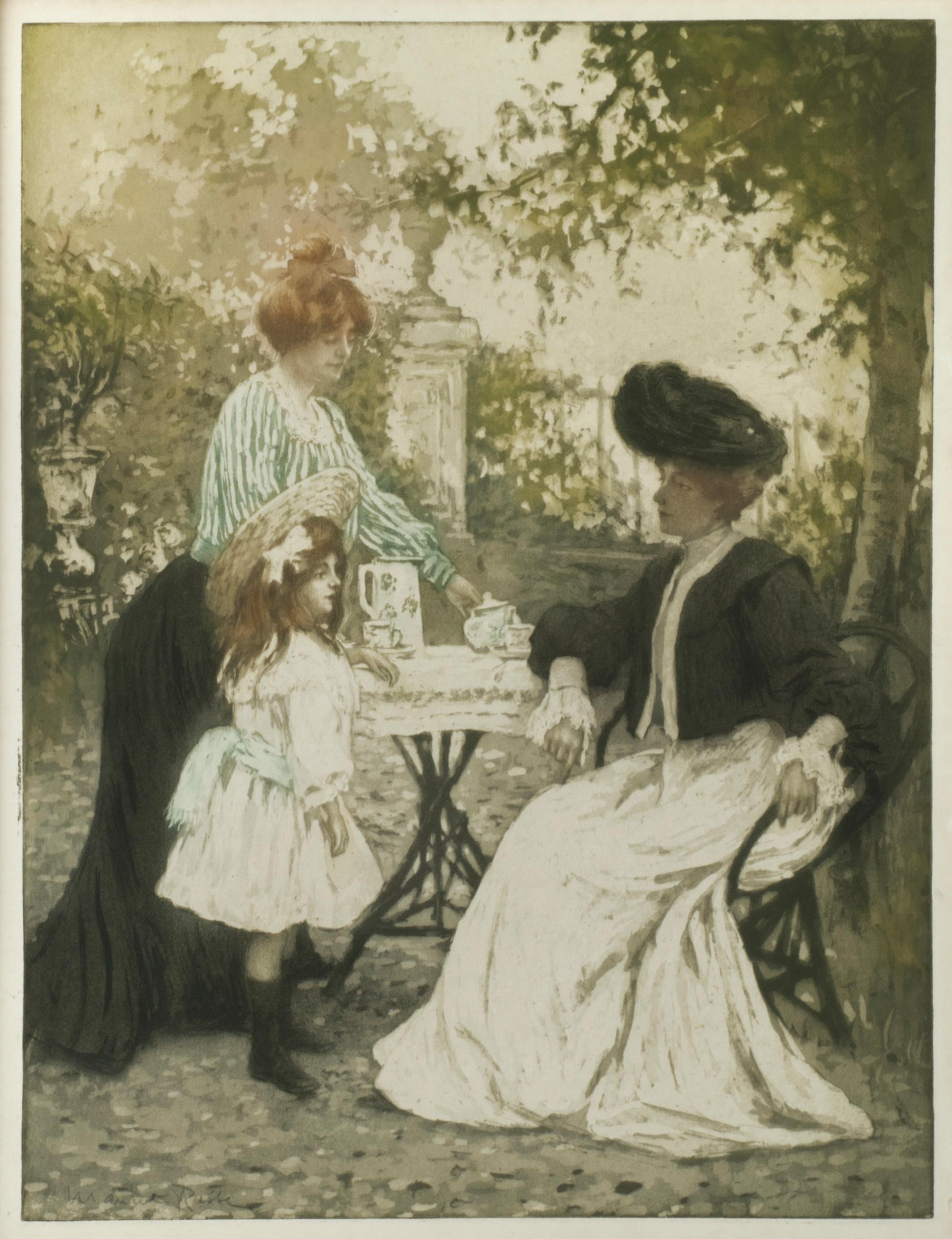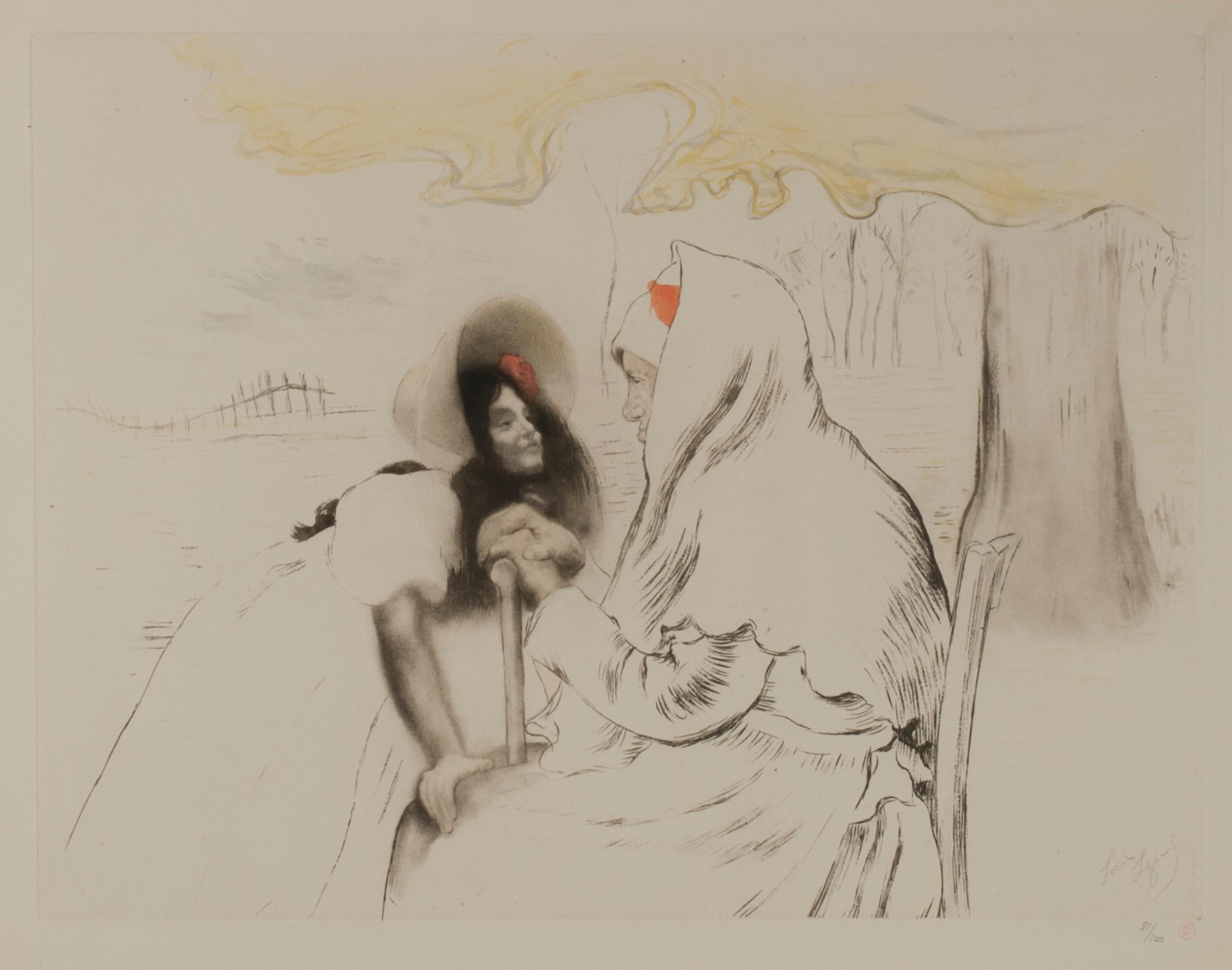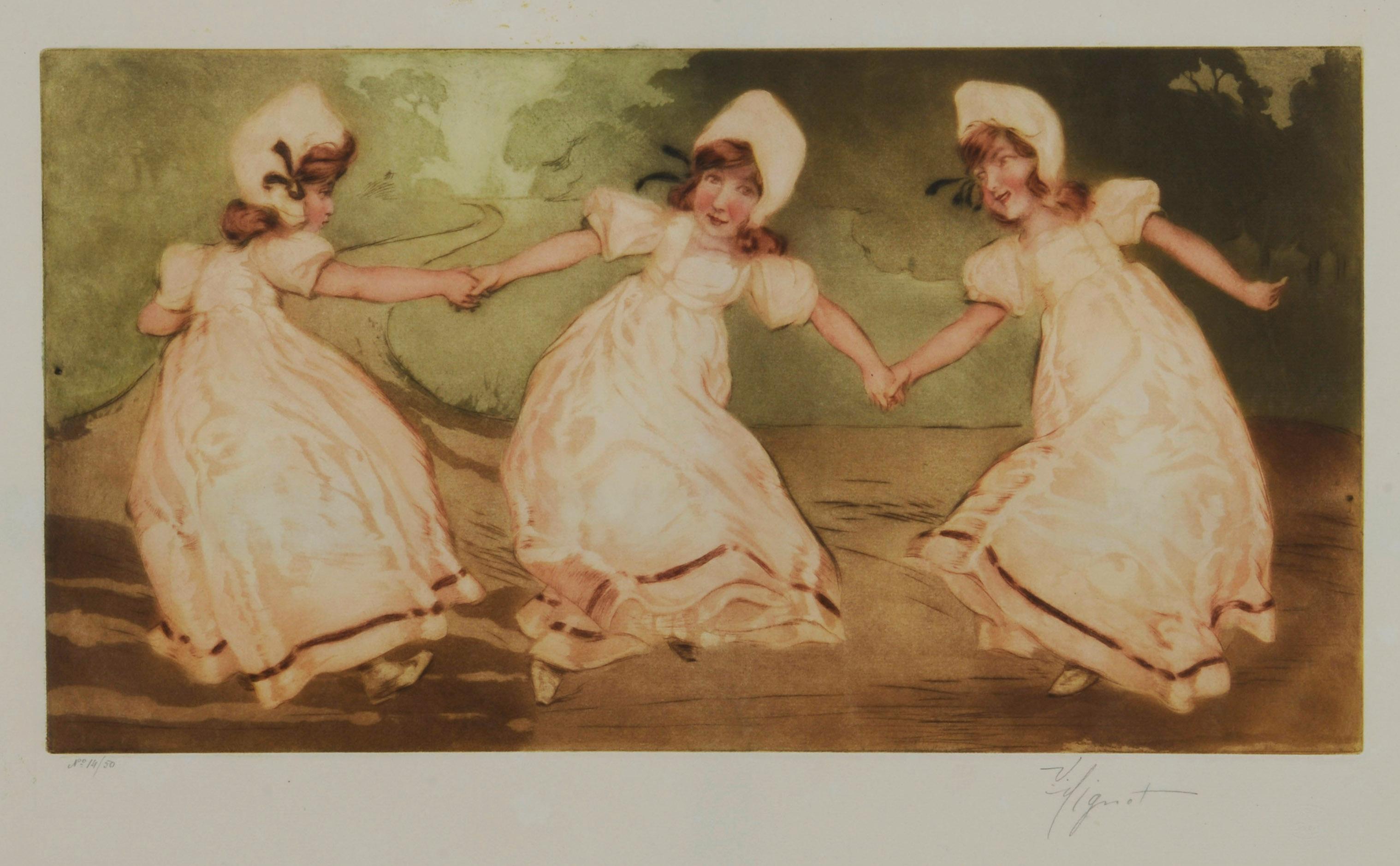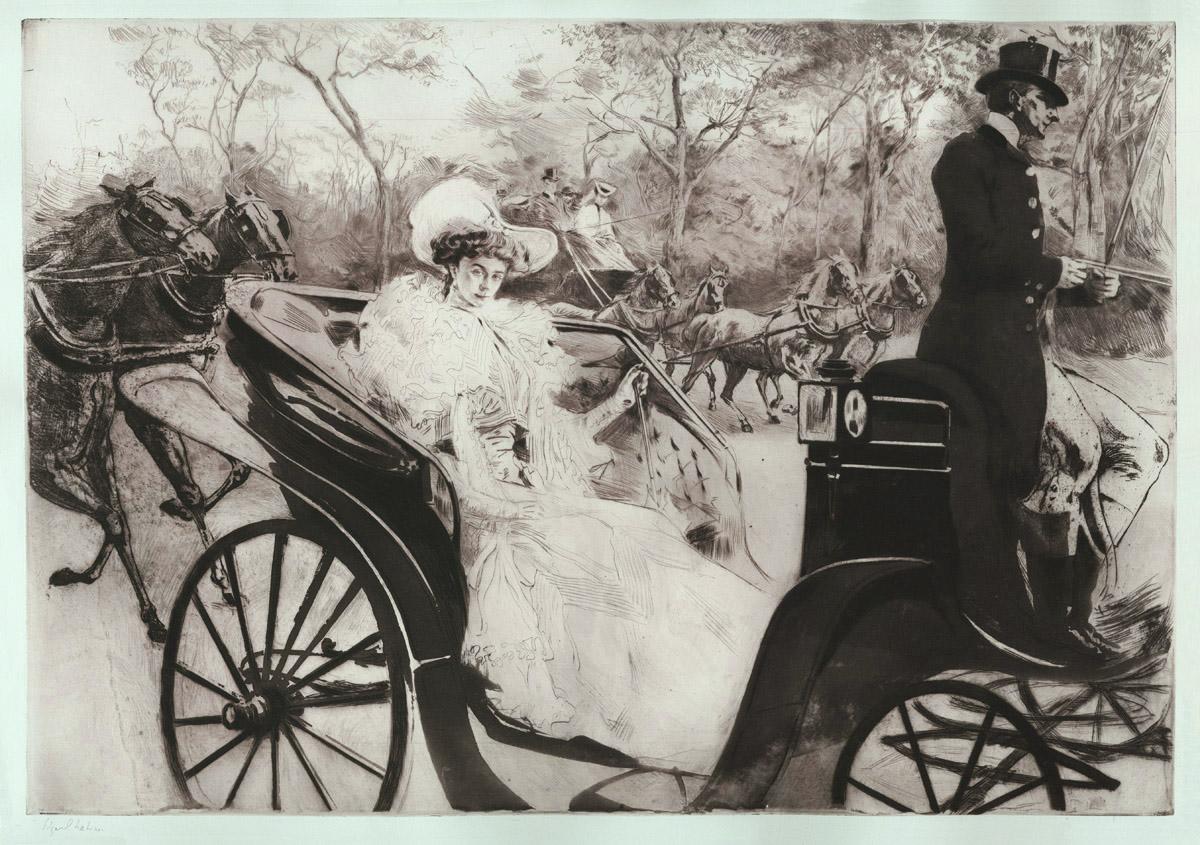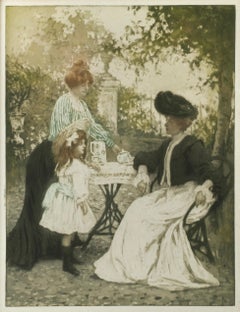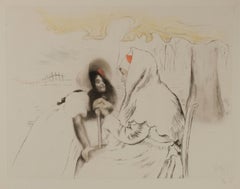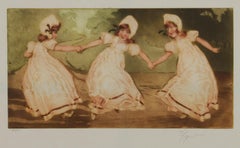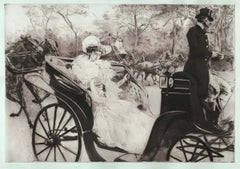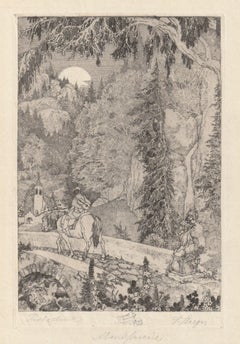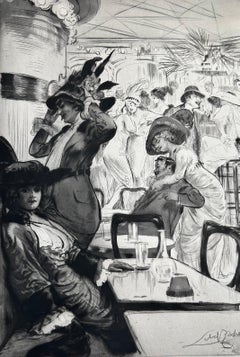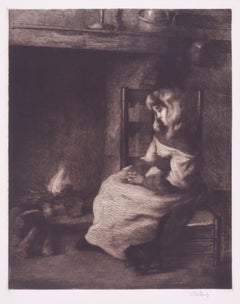
L'Angellus
View Similar Items
Want more images or videos?
Request additional images or videos from the seller
1 of 11
Alfredo MüllerL'Angellus1902
1902
About the Item
- Creator:Alfredo Müller (1869-1940, Italian)
- Creation Year:1902
- Dimensions:Height: 19.25 in (48.9 cm)Width: 15.5 in (39.37 cm)
- Medium:
- Movement & Style:
- Period:
- Condition:
- Gallery Location:Fairlawn, OH
- Reference Number:Seller: FA86661stDibs: LU14011813502
About the Seller
5.0
Recognized Seller
These prestigious sellers are industry leaders and represent the highest echelon for item quality and design.
Gold Seller
Premium sellers maintaining a 4.3+ rating and 24-hour response times
Established in 1978
1stDibs seller since 2013
791 sales on 1stDibs
Associations
International Fine Print Dealers Association
Authenticity Guarantee
In the unlikely event there’s an issue with an item’s authenticity, contact us within 1 year for a full refund. DetailsMoney-Back Guarantee
If your item is not as described, is damaged in transit, or does not arrive, contact us within 7 days for a full refund. Details24-Hour Cancellation
You have a 24-hour grace period in which to reconsider your purchase, with no questions asked.Vetted Professional Sellers
Our world-class sellers must adhere to strict standards for service and quality, maintaining the integrity of our listings.Price-Match Guarantee
If you find that a seller listed the same item for a lower price elsewhere, we’ll match it.Trusted Global Delivery
Our best-in-class carrier network provides specialized shipping options worldwide, including custom delivery.More From This Seller
View AllLe Tasse de The (The Cup of Tea)
By Manuel Robbe
Located in Fairlawn, OH
Le Tasse de The (The Cup of Tea)
Color aquatint and etching, c. 1906
Signed in pencil in the image (see photo)
Edition: c. 100
Reference: Merrill Chase, Volume 1, No. 85
Condition: F...
Category
Early 1900s Art Nouveau Figurative Prints
Materials
Aquatint
L'Aieule (The Grandmother)
By Louis Legrand
Located in Fairlawn, OH
L'Aieule (The Grandmother)
Etching and aquatint printed in colors, 1904
Signed with the red stamp of the publisher, Gustave Pellet, Lugt 1193 and numbered (see photo)
Edition: 100 (81/100)
Reference: Arwas 202 iv/IV
IFF 98
Condition: Excellent, the sheet aged as usual
Image size: 14 1/4 x 18 5/8"
Sheet size: 16 15/16 x 24 1/4"
Louis Auguste Mathieu Legrand (29 September 1863 – 1951) was a French artist, known especially for his aquatint engravings, which were sometimes erotic. He was awarded the Légion d'honneur for his work in 1906.
Life
Legrand was born in the city of Dijon in the east of France. He worked as a bank clerk before deciding to study art part-time at Dijon's Ecole des Beaux-Arts. He won the Devosge prize at the school in 1883.[2] In 1884 Legrand studied engraving under the Belgian printmaker Félicien Rops.
Legrand's artworks include etchings, graphic art and paintings. His paintings featured Parisian social life. Many were of prostitutes, dancers and bar scenes, which featured a sense of eroticism. According to the Hope Gallery, "Louis Legrand is simply one of France's finest early twentieth century masters of etching." His black and white etchings especially provide a sense of decadence; they have been compared to those of Henri de Toulouse-Lautrec, though his drawings of the Moulin Rouge, the can-can dance and the young women of Montmartre preceded Toulouse-Lautrec's paintings of similar scenes. He made over three hundred prints of the night life of Paris. They demonstrate "his remarkable powers of observation and are executed with great skill, delicacy, and an ironic sense of humor that pervades them all."
Two of his satirical artworks caused him to be tried for obscenity. The first, "Prostitution" was a symbolic drawing which depicted a naked girl being grasped by a dark monster which had the face of an old woman and claws on its hands; the second, "Naturalism", showed the French novelist Émile Zola minutely studying the thighs of a woman with a magnifying glass. Defended by his friend the lawyer Eugène Rodrigues-Henriques (1853–1928), he was found not guilty in the lower court, but was convicted in the appeal court and then given a short prison sentence for refusing to pay his fine.
Legrand was made famous by his colour illustrations for Gil Blas magazine's coverage of the can-can, with text by Rodrigues (who wrote under the pseudonym Erastene Ramiro). It was a tremendous success, with the exceptional quantity of 60,000 copies of the magazine being printed and instantly sold out in 1891.
In 1892, at the instigation of the publishing house Dentu, Legrand made a set of etchings of his Gil Blas illustrations. The etchings were published in a book, Le Cours de Danse Fin de Siecle (The End of the Century Dance Classes).
Legrand took a holiday in Brittany, which inspired him to engrave a set of fourteen lithographs of simple country life called Au Cap de la Chevre (On Goat Promontory). It was published by Gustave Pellet who became a close friend of Legrand's. Pellet eventually published a total of 300 etchings by Legrand, who was his first artist; he also published Toulouse-Lautrec and Félicien Rops among others.
He did not only work in graphics; he exhibited paintings at the Paris salon of the Société Nationale des Beaux-Arts starting in 1902. In 1906 he was made a chevalier of the Légion d'honneur.
Legrand died in obscurity in 1951. A retrospective exhibition was held at the Félicien Rops museum in Namur, Belgium in 2006 to celebrate his graphic art. The art collector Victor Arwas published a catalogue raisonné for the occasion.
Books illustrated
de Maupassant, Guy: Cinq Contes Parisiens, 1905.
Poe, Edgar Alan: Quinze Histoires d'Edgar Poe...
Category
Early 1900s Art Nouveau Figurative Prints
Materials
Aquatint
Heureux age! (Happy Age!)
By Victor Mignot
Located in Fairlawn, OH
Heureux age! (Happy Age!)
Etching and aquatint. c, 1900
Signed lower right in pencil
Edition; 50 (14/50)
Published by Edmund Sagot, Paris
Sagot blindstamp, Lugt 2254, lower right
Con...
Category
Early 1900s Art Nouveau Figurative Prints
Materials
Aquatint
La Promenade
By Edgar Chahine
Located in Fairlawn, OH
La Promenade
Etching, soft-ground, aquatint & drypoint,
Signed in pencil lower left
Published by Edmund Sagot, Paris
Edition of 50 in black only, aside from the edition of 50 in co...
Category
Early 1900s Art Nouveau Figurative Prints
Materials
Drypoint, Etching, Aquatint
Woman's Head (Vrouwekop), Marguerite Adolphine Helfrich
By Jan Toorop
Located in Fairlawn, OH
Woman's Head (Vrouwekop), Marguerite Adolphine Helfrich
Drypoint, 1897
Signed lower right in pencil: J Toorop; by later hand
Toorop's model for this print was Marguerite Adolphine H...
Category
1890s Jugendstil Figurative Prints
Materials
Drypoint
Der Kuss The Kiss (plate facing page 116)
By Peter Behrens
Located in Fairlawn, OH
Der Kuss The Kiss (plate facing page 116)
Color lithograph, 1898
Signed with the artist's initials in the image (see photo)
Published in Pan, Volume IV.2 (Jul-Aug-Sept 1898)
Publishe...
Category
1890s Art Nouveau Figurative Prints
Materials
Lithograph
You May Also Like
Troubadour, from The Mastersingers of Nuremberg
Located in Middletown, NY
Stipple point etching on tissue-thin handmade Japon paper, 7 5/8 x 5 inches (193 x 126 mm), full margins. Signed, titled, dated, inscribed and numbered 10/25 in pencil, lower margin....
Category
Early 20th Century Jugendstil Landscape Prints
Materials
Handmade Paper, Etching
"La Danse à la Campagne", 2nd plate by Pierre-Auguste Renoir
By Pierre-Auguste Renoir
Located in Hinsdale, IL
RENOIR, PIERRE AUGUSTE
(1841 -1919)
"La Danse à la Campagne", 2nd plate
(The Country Dance (second plate))
Delteil 2, Stella 2
Soft-ground Etching in black ink, c. 1890
Only State...
Category
1890s Art Nouveau Figurative Prints
Materials
Etching
"Portrait of Madame Georges Menier" By Helleu
By Paul César Helleu
Located in Hinsdale, IL
HELLEU, PAUL CÉSAR
(1859 - 1927)
MADAME GEORGES MENIER
Montesquiou XXI
Drypoint in colors, c. 1900
Signed in pencil, lower right
Printed on wove paper
Full Margins
22 1/4” x 13...
Category
Early 19th Century Art Nouveau Figurative Prints
Materials
Drypoint, Etching
Les Bars, selected prints
By Almery Lobel-Riche
Located in Wilton, CT
6 plates from the Lobel- Riche books, Les Bars depicting pre- war Paris fashions in the bars and nightclubs.
Category
1910s Art Nouveau Figurative Prints
Materials
Etching
$480 Sale Price
20% Off
Les Bars
By Almery Lobel-Riche
Located in Wilton, CT
A very fine copy of "Les Bars," an album of ten original etchings by the master Lobel-Riche, representing fashionable women in various Parisian social settings. This album, part of a...
Category
1910s Art Nouveau Figurative Prints
Materials
Etching
$8,000 Sale Price
20% Off
Les Bars
By Almery Lobel-Riche
Located in Wilton, CT
A very fine copy of "Les Bars," an album of ten original etchings by the master Lobel-Riche, representing fashionable women in various Parisian social settings. This album, part of a...
Category
1910s Art Nouveau Figurative Prints
Materials
Etching
